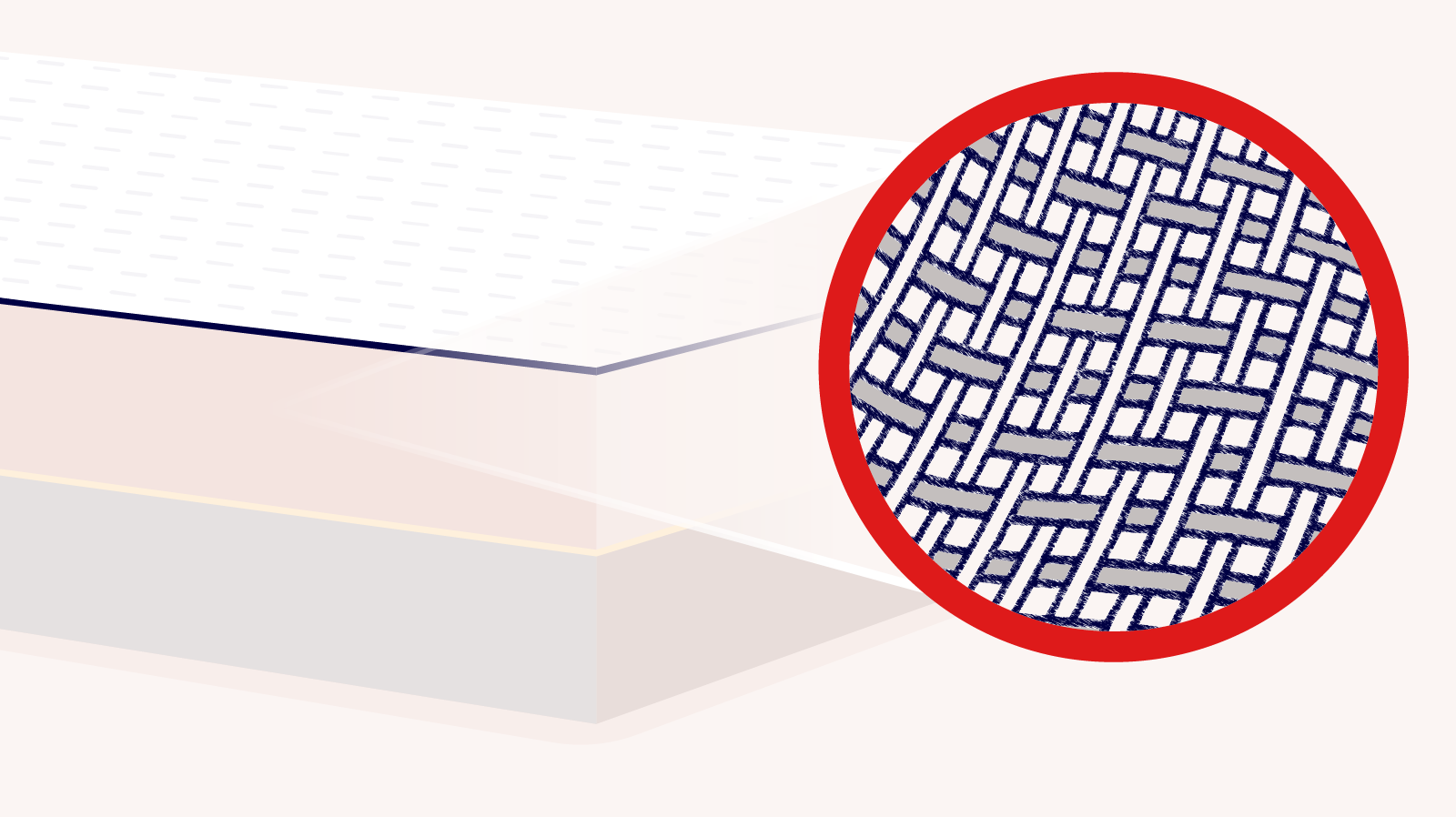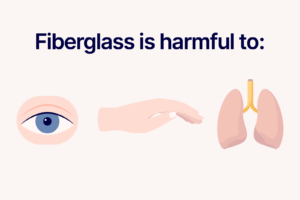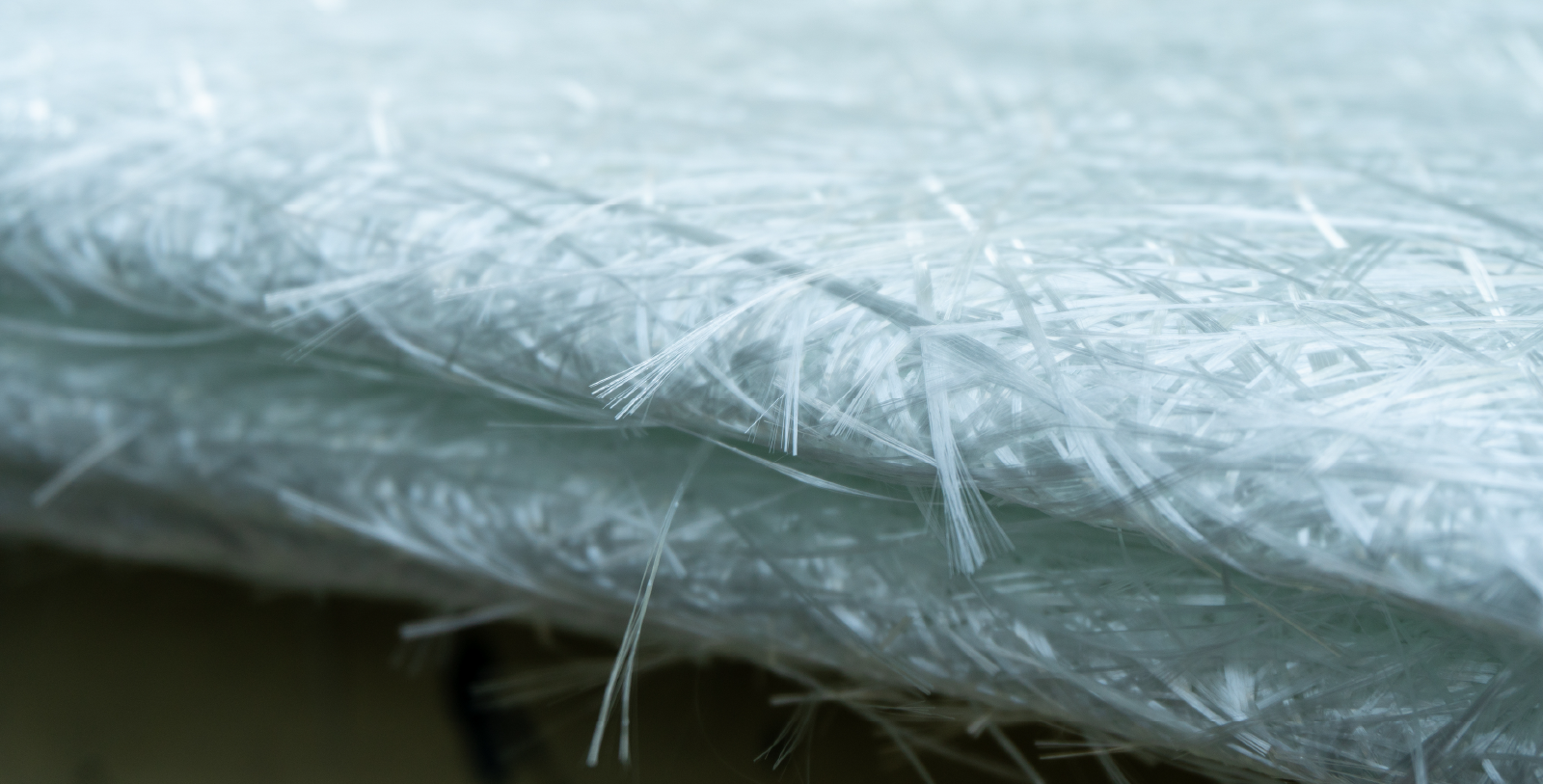Is Fiberglass In a Mattress Dangerous? Everything You Need to Know (2025)
Updated: March 31, 2025 | Published: July 2, 2024Like many items in your home, mattresses have to meet certain fire safety regulations. Some mattress manufacturers use fiberglass to make their mattresses fire resistant and meet flammability regulations. While fiberglass is safe when it’s contained, having fiberglass in your mattress is a health risk.
Here’s everything you need to know about fiberglass in mattresses—and how to spot it at home.
What is fiberglass?
Fiberglass is a combination of plastic and glass fibers that are woven together. (This glass isn’t made from broken shards—it’s created by melting down minerals through a process called pultrusion.)
Mattress manufacturers sometimes use fiberglass as a fire retardant in memory foam mattresses and mattress covers. Fiberglass is an attractive option for many manufacturers because it’s lightweight, heat resistant, long lasting, and cheap to make.

Why is fiberglass used in mattresses?
Mattresses contain flammable foams and fabrics. This can be dangerous if a fire starts while you’re sleeping.
As a safety measure, each country has its own fire regulation policies that manufacturers need to follow. For example, in the US, the United States Consumer Product Safety Commission requires all mattresses and mattress toppers to be fire resistant.
This often takes the form of a fire sock. This is a layer directly beneath the mattress cover, which is wrapped around all of the inner layers. In many cases, manufacturers can choose the materials they use for this fire sock.
Fiberglass is inexpensive to produce, so it’s a common way to meet mattress flammability standards while keeping costs down.
Is mattress fiberglass safe?
Fiberglass on its own isn’t dangerous, as long as it’s well contained. Think of the fiberglass used in attics and wall insulation—you shouldn’t touch it, but its presence isn’t dangerous. That’s because your ceiling and walls keep the fiberglass where it’s supposed to be.
The issue lies with cheaply or poorly made mattresses that can’t adequately contain their fiberglass. If fibers start to break away from the fire sock, they can work their way through the mattress’s top cover and escape into your home. The particles can then irritate and cause long-term damage to your eyes, skin, and lungs.
Removing the mattress cover can also be a problem if the mattress contains fiberglass. This exposes the fiberglass to the air and can quickly distribute particles throughout the room. Even if the mattress has a cover zipper, only remove it for cleaning if the manufacturer says you can.
READ MORE: How to wash a mattress protector
If the fiberglass leak is significant and particles are able to travel to other areas of your home, it can be incredibly difficult and expensive to properly clean and remove it. Cleaning fiberglass contamination requires special equipment and professional cleaners to come to your home.
In recent years, lawsuits have been filed against mattress brands like Zinus due to the use of fiberglass in mattresses. Customers complained of fiberglass leaks from their mattresses, leading to ongoing health problems, medical bills, and—in one plaintiff’s case—nearly $20,000 in damages.

Are fiberglass mattresses illegal in Canada?
No. Canada has different fire retardant guidelines compared to the United States, so this allows most Canadian mattress manufacturers to avoid fiberglass. It’s common to find fire socks that use safer materials like rayon.
Canada hasn’t established laws that ban the use of fiberglass. As a result, manufacturers can sell mattresses that contain fiberglass to Canadians. This means that if you purchase a mattress from the United States or China, or if you buy a cheap mattress from a retailer like Amazon, there’s a chance it could contain fiberglass.
READ MORE: Should you buy your next mattress from Amazon?
How do you know if there’s fiberglass in a mattress?
Looking for a mattress that doesn’t contain fiberglass? Here are some ways to know whether a particular mattress could use fiberglass—without having to unzip the mattress cover.
1. Check the country of origin
A mattress’s country of origin can indicate whether the product contains fiberglass. You can often find this information on the mattress company’s website. (This is one reason why our mattress scoring system deducts points when a brand doesn’t share the country of origin.)
If a mattress is made in the United States or China, there’s a good chance the mattress contains fiberglass. The United States has different flammability standards than Canada, and many manufacturers within China use fiberglass as cheap flame retardant.
Not all mattresses made outside of Canada contain fiberglass, but it’s certainly more likely.
2. Read the law label
Every mattress has a law label located somewhere on the outside. This label not only states the country of origin, but also lists any materials used to make the mattress.
It’s not always as simple as looking for the word “fiberglass.” Some manufacturers use terms like “glass fibers”, “glass wool,” “glass-reinforced plastic,” “glass-fiber reinforced plastic,” or “fiberglass-reinforced plastic.” All of these words mean there’s fiberglass in your mattress.
3. Keep pricing in mind
As a cheap flame retardant, fiberglass is commonly used in less expensive mattresses to help keep production costs down. This means that lower-priced mattresses are more likely to contain fiberglass. For example, the Zinus Green Tea mattress costs just $320 for a queen size, and some models are known to contain fiberglass.
4. Ask the mattress company
You can always contact the mattress manufacturer directly to ask about the fiberglass content of their mattresses. Use the online chat feature, contact form, phone number, or other method of contact to speak with their customer service team.
If you aren’t confident in their answer, keep shopping until you’re satisfied with a mattress.
What does fiberglass look like in a mattress?
Fiberglass looks like shiny, white, plastic-looking threads. It’s typically woven into the fire sock that’s wrapped around the inner layers of your mattress. It should only be visible if you remove your mattress’s cover.
That said, without proper testing (which can be very expensive), it can be hard to know for sure if a mattress contains fiberglass.

Remember, having a mattress with fiberglass isn’t necessarily a bad thing as long as it stays contained. If the mattress is good quality, there may not be a threat to your health. We recommend using a mattress protector as an extra barrier between you and your mattress.
What should I do if my fiberglass mattress leaks?
You may have a fiberglass leak if you see small, shiny shards poking through your mattress cover or lying on the floor beneath your mattress. At this point it’s essential to remove the mattress from your home.
If you need to remove a mattress containing fiberglass, the California Department of Public Health advises you to follow these steps:
- Put on goggles, gloves, a mask over your nose and mouth, and clothing that covers your skin.
- Wrap your mattress in a mattress bag and seal it before moving it out of the house. You can buy one from a hardware store or moving truck company.
- Use a vacuum with a HEPA filter to remove the shards. Don’t sweep up the fibers, as this can spread them around and move them into the air.
- Use a damp cloth to wipe all surfaces where fiberglass was present.
- Wash anything that came into contact with the fiberglass (e.g., cleaning cloths, blankets, sheets, pajamas) separately from your other laundry. If you can’t safely remove glass fibers from any items, throw them out.
- Run the washing machine on the rinse cycle afterward to remove any remaining fiberglass.
READ MORE: How to get rid of a mattress
Frequently Asked Questions
What are some mattresses that don’t have fiberglass?
Since Canada has different flammability standards compared to countries like the United States, most Canadian manufacturers don’t use fiberglass. Mattresses from Canadian brands like Douglas, Logan & Cove, Octave, and Juno don’t contain fiberglass.
Does the Casper mattress use fiberglass?
Some older Casper models are known to use fiberglass as a flame retardant to meet USA flammability standards. This information was once publicly available on the Casper website but has since been removed.
It’s not clear whether newer models like The Casper are made with fiberglass. However, Casper does say not to remove the mattress cover for any reason, which is a common recommendation for mattresses containing fiberglass.
Does the Endy mattress have fiberglass?
No, The Endy and Endy Hybrid don’t contain fiberglass.
Do IKEA mattresses have fiberglass?
IKEA tries to avoid using fiberglass wherever possible and uses a polyester-rayon fire barrier instead. That said, some older mattresses, like a previous version of the Åmsosen, contained “glass fiber” (fiberglass) in the inner cover. You’re less likely to find fiberglass in newer mattresses.
Do Sealy mattresses use fiberglass?
None of the Sealy models we have reviewed contain fiberglass. The company and retailers who sell Sealy mattresses also claim that the brand doesn’t use fiberglass.
Do Tempur-Pedic mattresses have fiberglass?
While we can’t say for sure whether all Tempur-Pedic mattresses contain fiberglass, we know that Tempur-Pedic TEMPUR-Cloud has fiberglass in its fire sock. Tempur-Pedic mattresses are made in the USA, so other mattress models may have a fire sock woven with fiberglass to make them fire-resistant.
Our goal is to provide the information you need to find the mattress that’s right for you. Get started with some of our most popular mattress shopping resources:
- Best Mattress Guides: Best Mattress Canada, Best Mattress In a Box
- Reviews: Douglas Original, Logan & Cove Choice, Juno, Octave Vista
- Comparisons: Douglas vs Endy, Douglas vs Casper
We use independent, third-party engineering firms (commissioned by us) with the APEGA stamp of approval to conduct mattress testing on our behalf, using publicly available data. We review and test all mattresses on 40+ criteria we think are important to you, including price, country of manufacture, sleep trial, warranty, features, materials used, motion isolation and edge support ratings, customer satisfaction reviews, returns, and refunds.
